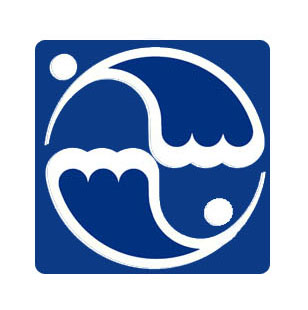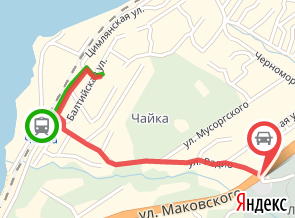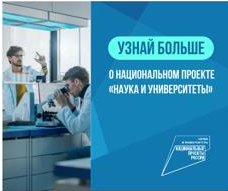The Laboratory for Integrated Research of the Environment and Mineral Resources (LIREMR) was organized on June 1, 2019, as a part of national Science project for study of the environment state, forecast and evaluation of mineral resources of the Far Eastern Seas and the World Ocean using innovative methods. The results of the laboratory team directly correspond to the objectives of the Maritime Doctrine of the Russian Federation, breakthrough research in the Arctic, the Marine Development Strategy of the Russian Federation, the Program for Development of Russian Far East, etc., and also to the priorities of the national Science project and the Strategy of Scientific and Technological Development of the Russian Federation. Assessment of alternative energy sources in the World Ocean is the most important task of contemporary research.
The laboratory conducts research on the environmental state, forecasts and estimates of the mineral resources of the World Ocean based on innovative methods: hydrometeorological, geochemical, microbiological, biogeochemical, gas-geochemical, geological, geophysical, optical and satellite.
- Objectives:
- comprehensive indication of the mineral resources of the World Ocean and the study of their impact on the marine environment
- development of advanced technologies and innovative methods for research, forecast, prospecting and assessment of mineral resources and their forming processes.
Research methods
1. Microbiological methods
- Cultural methods. Search, extraction, description and study of aerobic and anaerobic bio-indicating microorganisms associated with abnormal gas fields and authigenous mineralization. Works with live pure and accumulative cultures of methanotrophic, methylotrophic, hydrocarbon-oxidizing and sulfate-reducing microorganisms.
- Molecular and genetic methods. Analysis of 16S rDNA and functional genes using real-time PCR method.
2. Remote sensing. Satellite data is used for the study of climate change, natural and technological hazards, impact of human activities on the environment.
- Passive methods:
Analysis of data from satellite scanners: MODIS-Aqua/Terra, NPP VIIRS, GOCI-COMS, SGLI-GCOM-C, LandSat, CALIPSO, etc. - Active methods:
radars in the centimeter and decimeter range, microwave radiometers (ALOS-2, Sentinel-1, AMSR2, GMI).
3. Geophysical methods. Study of the deep Earth and lithosphere structure.
4. Hydrological measurements
- underway measurements of seawater temperature and salinity along the course of the vessel (thermosalinograph SBE-45);
- measurements of deep profiles of temperature, salinity, seawater pressure, concentration of chlorophyll-a and dissolved organic matter, phycoerythrin, photosynthetically active radiation during the vessel stop (CTD SeaBird19plus immersion probe with additional sensors, Turner Design C6 immersion fluorimeter).
5. Gas chromatograph methods. Combination of methodological techniques for field, laboratory and theoretical research. The method is based on the technology of representative gas sampling in various media, gas chromatograph analysis and the use of a set of criteria for the analysis of background and anomalous gas-geochemical fields.
6. Chemical methods
- measurement of chlorophyll-a concentration according to state standard GOST 17.1.4.02-90;
- extraction and quantification of dissolved and particulate polycyclic aromatic hydrocarbons (PAHs) in water environment (using the following methods: solid-phase, ultrasonic and liquid-liquid extractions, analysis: high-performance liquid chromatography with fluorescence detection (HPLC-FD)) (Modified methods of EPA: Method 610: Polynuclear Aromatic Hydrocarbons; Method 8310.0: Determination of Polycyclic Aromatic Hydrocarbons in Ground Water and Wastes);
- simultaneous sample preparation method for quantification of PAHs and alkanes (C12-C38) in bottom sediments (extraction by ultrasonication, pre-treatment: column chromatography, analysis: HPLC-FD (PAHs) and gas chromatography (alkanes)).
7. Optical methods
- passive hyperspectral optical sensing of the sea'a rising radiation in accordance with NASA protocols for surface measurements during vessel stops (ASD FieldSpec spectroradiometer)
- measurements of photosynthetically active solar radiation over the sea surface along the course of the vessel (Li-Cor sensors);
- underway fluorimetry of seawater along the course of the vessel (LF-3 fluorimeter, developed by IAPU FEB RAS, patent RU108844U1);
- laboratory measurements of three-dimensional seawater fluorescence spectra under two-frequency excitation (Varian Cary Eclipse spectrophotometer, Shimadzu UV-2600)
8. Geostructural methods: comprehensive approach using the latest achievements and cartographic information in the field of structural geology, seismology, geodynamics, tectonics, basin analysis, distribution of seafloor sediments, oil and gas deposits, gas hydrates and seismic stratigraphy using GIS technology (ArcGIS, RockWorks, Fledermaus).
9. Geoecological methods. Integration of geophysical, geochemical, statistical and natural indication methods for assessment of the geosystem state in general.
10. Geological methods. Geological studies of the continent-ocean transitional zone. Geological mapping (geological map production).
11. Hydrometeorological methods. Study of gas distribution using the Picarro G2311-f laser gas analyzer.
(in collaboration with FEFU)
- Picarro G2311-F fast analyzer for simultaneous measurement of H2O, CH4, CO2
- WXT520-NC Vaisala weather sensor
- Ultrasound anemometer Gill Windmaster 3D
- Kipp & Zonen global radiation sensor
- LI-COR Quantum sensor
- Temperature sensor 107-33-PT Temp Probe (-50 to + 70C)
- Reflectometer CS655-33-PT-DS 12cm Soil Water Content
- Self-calibrating heating plate HFP01SC-L33-PT Hukseflux Self Calibrating Soil
- Gas chromatograph "S-Chromium" for the analysis of sulfur-containing gases.
- Detecting amplifier DTptime 5, DNA Technology
- Liquid analyzer “FLUORAT ® - 02-PANORAMA”
- Microbiological Safety Cabinet BMB-II-Laminar-S-1,2 NEOTERIC Class II
- PCR cabinet with UV lamp
- Steam sterilizer VK-75-01
- Thermostats +5 to + 60 °C
- Anaerobic jars
- Refrigerators
- Phase contrast light microscopes
- Program of the Fundamental Scientific Research of the State Academies of Sciences for 2013-2020. Section IX. Earth Sciences: 133. The World Ocean (physical, chemical and biological processes, geology, geodynamics and mineral resources of the oceanic lithosphere and continental margins; the role of the ocean in the Earth's climate, current climatic and anthropogenic changes in ocean natural systems).
- Theme FWMM-2019-0006. Registration number: № АААА-А19-119122090009-2.
- "Far East” programs № 20-010, 19-019, 21-VAST-014 and 21-VAST-017 in collaboration with the Vietnam Academy of Science and Technology (VAST QTRU 02.02/20-21, QTRU.02.05/19-20, QTRU02.03/19-20 and QTRU02.01/21-22).
- Studies within the framework of the joint Russian-Vietnamese laboratory in the field of marine geosciences (POI FEB RAS – IMGG VAST)
- RFBR grant 20-35-70014, 2020-2021. Interrelation of gasgeochemical fields, tectonics, geodynamic situation and oil and gas bearing potential which determine the geologic and hydrocarbon potential of the North Vietnam.
- Grant of the President of the Russian Federation 357.2021.1.5, 2021-2022.
- Grant of the Ministry of Science and Higher Education of the Russian Federation 13.1902.21.0012.
- RFBR grant 14-05-31031_mol_а. Distribution of polycyclic aromatic hydrocarbons (PAHs) in the marine environment of the northwestern part of the Japan Sea.
- RFBR grant 16-55-50071. Study on dynamics of polycyclic aromatic hydrocarbons and radioactive compounds in atmosphere and ocean in East Asia 6. RFBR grant 17-05-00231_а. Study on PAH vertical transport in the Japan/East Sea water column.
- Establishing the only geomicrobiological group in the Russian Far East conducting research on anaerobic gas-trophic, hydrocarbon-oxidizing and gas-generating microorganisms. Discovering two new strains of sulfate-reducing and oil-oxidizing indicating bacteria.
- During marine expeditions in 2018-2020, the lab team discovered zones of joint detection of free-living microorganism groups in the Sea of Japan and the Tatar Strait in the areas prospective for alternative hydrocarbons source accumulation (gas hydrates, deep-sea manifestations of oil and gas content). Oil-oxidizing bacteria belonging to the phylum Actinobacteria, Firmicutes, and Proteobacteria were detected. One of the strains (dwelling in the seafloor sediments of the Tatar Strait) belonging to the genus Desulfosporosinussp was isolated and described.
- The Laboratory for Integrated Research of the Environment and Mineral Resources together with the Department of Soil Science (School of Natural Sciences, FEFU) deployed a station for integrated monitoring of atmosphere and soil at the "Schultz Cape" marine experimental station. The installed equipment allows to obtain representative geochemical, hydrometeorological, geological databases and create maps using a set of methods (including numerical modeling and remote methods) for reconstruction, variability assessment and forecast of the environment state.
- The spatial distribution of dissolved and suspended PAHs concentrations and their temporal changes was determined in the coastal and deep-sea areas of the Sea of Japan. Calculating The annual mass fluxes of PAHs to the coastal waters of the Sea of Japan were calculated for some rivers (Tumen River and Partizanskaya River).
- Based on passive radiometry data, a method detecting oil pollution on the water surface was developed. The oil spill from Sanchi oil tanker in the East China Sea was monitored using remote sensing methods.
- The amount of greenhouse gas emissions (CO2, CH4) from seawater into the atmosphere in the Far-Eastern seas was assessed based on indications of Picarro laser analyzer.
- A data set was created on the basis of new subsatellite, hydrobiological and hydro-optical measurements in various types of waters (the Sea of Japan).
- For the first time in history, large-scale regional gas-geochemical and geological studies were performed. Unique data on distribution of hydrocarbon gases, helium and hydrogen in the North Vietnam area and its shelf was obtained in terms of the formation of regional criteria for oil and gas content.
- New data on anomalies of the gravity and magnetic fields along the shelf and slope of Vietnam was obtained. Complex morphotectonic structure of the Phu Khanh sedimentary basin was revealed.
- И.Е. Стёпочкин, П.А, Салюк, В.А. Качур. Обнаружение разлива нефтепродуктов в виде эмульсий и отдельных пленок на поверхности Берингова моря с помощью гиперспектральной оптической радиометрии в августе 2013 г.// Оптика атмосферы и океана. 2021. №1 (34).
- Еськова А.И., Пономарева А.Л., Легкодимов А.А., Калгин В.Ю., Шакиров Р.Б., Обжиров А.И. Особенности распределения индикаторных групп микроорганизмов в донных отложениях Южно-Китайского моря // Известия Иркутского Государственного Университета. Серия: Науки о земле. 2020. Т. 33. С. 33-43 DOI: 10.26516/2073-3402.2020.33.33.
- Митник Л.М., Хазанова Е.С. Авария танкера Sanchi в Восточно-Китайском море: обнаружение и мониторинг нефтяного загрязнения по радиолокационным и оптическим спутниковым изображениям // Современные проблемы дистанционного зондирования Земли из космоса. 2020. Т. 17. № 4. С. 246–255. DOI: 10.21046/2070-7401-2020-17-4-246-255.
- Chizhova T., Koudryashova Y., Prokuda N., Tishchenko P., Hayakawa K. Polycyclic aromatic hydrocarbons in the estuaries of two rivers of the Sea of Japan // International Journal of Environmental Research and Public Health. 2020. Vol. 17. № 17. P. 6019. DOI: 10.3390/ijerph17176019.
- Syrbu N.S., Shakirov R.B., Le Duc Anh, Kholmogorov A.O., Iakimov T.S, Kalgin V.Yu. Formation of Abnormal Gas-Geochemical Fields of Methane, Helium, and Hydrogen in Northern Vietnam, Its Coastal and Adjacent Water Areas // Lithology and Mineral Resources. 2020. Vol. 55. No. 6. P. 512–527. DOI: 10.1134/S0024490220060097.
- Емельянова Т.А., Петрищевский А.М., Изосов Л.А., Ли Н.С., Пугачев А.А. Позднемезозойско-кайнозойские этапы вулканизма и геодинамика Японского и Охотского морей // Петрология. 2020. T. 28. № 5. С. 468–481. DOI: 10.31857/S0869590320050027. (Emelyanova T.A., Petrishchevsky A.M., Izosov L.A., Lee N.S., Pugachev A.A. Late Mesozoic–Cenozoic Stages of Volcanism and Geodynamics of the Sea of Japan and Sea of Okhotsk // Petrology. 2020. Vol. 28. No. 5. P. 418–430. https://doi.org/10.1134/S0869591120050021).
- Изосов Л.А., Петрищевский А.М., Емельянова Т.А., Чупрынин В.И., Ли Н.С., Васильева М.А. Модель формирования западно-тихоокеанских окраинных морей: вихревая геодинамика, сейсмичность и мантийный апвеллинг // Вулканология и сейсмология. 2020. № 1. С. 49–63. DOI: 10.31857/S0203030620010022. (Izosov L.A., Petrishchevsky A.M., Emel’yanova T.A., Chuprynin V.I., Lee N.S., Vasilyeva M.A. The Model of Formation of the Western Pacific Marginal Seas: Vortex Geodynamics, Seismicity, and Mantle Upwelling // Journal of Volcanology and Seismology. 2020. Vol. 14. No. 1. P. 44–57. DOI: https://doi.org/10.1134/S0742046320010029).
- Koudryashova Yu.V., Chizhova T.L., Tishchenko P.Ya., Hayakawa K. Seasonal variability of PAHs in a coastal marine area of northwestern the Sea of Japan/East Sea (Possiet Bay) // Ocean Sci. J. 2019. V. 54(4). P. 635–655.
- Изосов Л.А., Чупрынин В.И., Мельниченко Ю.И., Ли Н.С. Морфоструктурный анализ при решении геологических проблем востока Азии // Геоморфология. 2018. № 4. С. 3–17. DOI: 10.7868/S0435428118040016
- Chizhova T., Koudryashova Yu., Tishchenko P., Lobanov V. Chapter 14: PAHs in the northwestern Japan Sea // In: Polycyclic Aromatic Hydrocarbons: Environmental Behavior and Toxicity in East Asia. Ed. K.Hayakawa, Springer, 2018, pp. 175-202.
- Izosov L.A., Bessonova E.A., Li N.S., Ogorodnii A.A., Zverev S.A. The Cenozoic Formations in the Peter the Great Gulf, Japan Sea and on its Shores: Indicators of a Polygenic Continentframe-Ocean Transition Zone // Journal of Volcanology and Seismology. 2015. Vol. 9, № 5. P. 307-318. DOI: 10.1134/S074204631505005X
- Чижова Т.Л., Тищенко П.Я., Кондратьева Л.М, Кудряшова Ю.В., Каваниши Т. Полициклические ароматические углеводороды в эстуарии реки Амур // Вода: химия и экология. 2013.№ 10. C. 14 – 22.
- Chizhova T., Hayakawa K., Tishchenko P., Nakase H., Koudryashova Yu. Distribution of PAHs in the norhwestern part of the Japan Sea // Deep-Sea Research II. 2013. V. 86-87. P. 19-24.
- Nadezhda S. Syrbu, PhD, head of laboratory
- Anna L. Ponomareva, PhD, senior researcher
- Yuriy A. Telegin, Ph. D., researcher
- Tatyana L. Chizhova, Ph.D., researcher
- Yulia V. Kudryashova, researcher
- Natalia S. Lee, researcher
- Elena S. Khazanova, researcher
- Igor E. Stepochkin, researcher
- Aleksey A. Legkodimov (postgraduate student), junior researcher
- Complex indication of natural gas fluxes, hydrocarbon deposits, and mineral resources; study of their impact on the marine environment.
- Creation of geochemical, hydrometeorological and biogeochemical long time series based on high-resolution data received with the use of a set of methods (including laser and remote methods).
- Developing technologies and innovative methods for integrated research, forecast, prospecting and evaluation of mineral resources.
- Creation of the national biobank of cultures and microorganism strains (seas of the Russian Far East) to study their impact on marine environment.
- Study of bacteria genetic diversity in marine sediments.
- Study of distribution, genesis, and specificity of biogeochemical cycles of polycyclic aromatic hydrocarbons (PAHs) in the water column and bottom sediments (Sea of Japan, South China Sea, East Arctic Seas).
- Study of anomalous geophysical fields as a basis for research of the deep structure and correlation of gas-fluid fluxes and tectonic faults in the marginal seas of the Pacific Ocean.
- Identifying the correlation between gas-fluid fluxes, on the one part, and anomalous geophysical fields and tectonic disturbances in the lithosphere of the continent–ocean transitional zone, on the other part.
- Hydrometeorological database creation using the data obtained with unique equipment at the International Scientific and Educational Geosphere Polygon (POI FEB RAS). Integration of aerospace information on key areas of hydrocarbon manifestations.
- Study of natural gas distribution in the bottom sediments, water and atmosphere of the Sea of Okhotsk, Sea of Japan, South China Sea and East Siberian Sea compared to other parts of the World Ocean.
- Marine research using optical and remote methods.
- Study of anthropogenic organic pollution in the water environment and environmental risk assessment.
- Study of distribution and migration biogeochemical patterns for persistent organic pollutants in the water environment.
- Nadezhda S. Syrbu, Ph.D., head of laboratory
- Anna L. Ponomareva, Ph.D., senior researcher
- Чижова Татьяна Леонидовна, к.х.н., researcher
- Natalya S. Lee, researcher
- Igor E. Stepochkin, researcher
- Elena S. Khazanova, researcher
- Alyona I. Eskova, researcher
- Кудряшова Юлия Владимировна, researcher
- Aleksey A. Legkodimov, junior researcher
- Roman A. Grigorov, senior engineer
- Sofiya N. Khokkanen, technician





